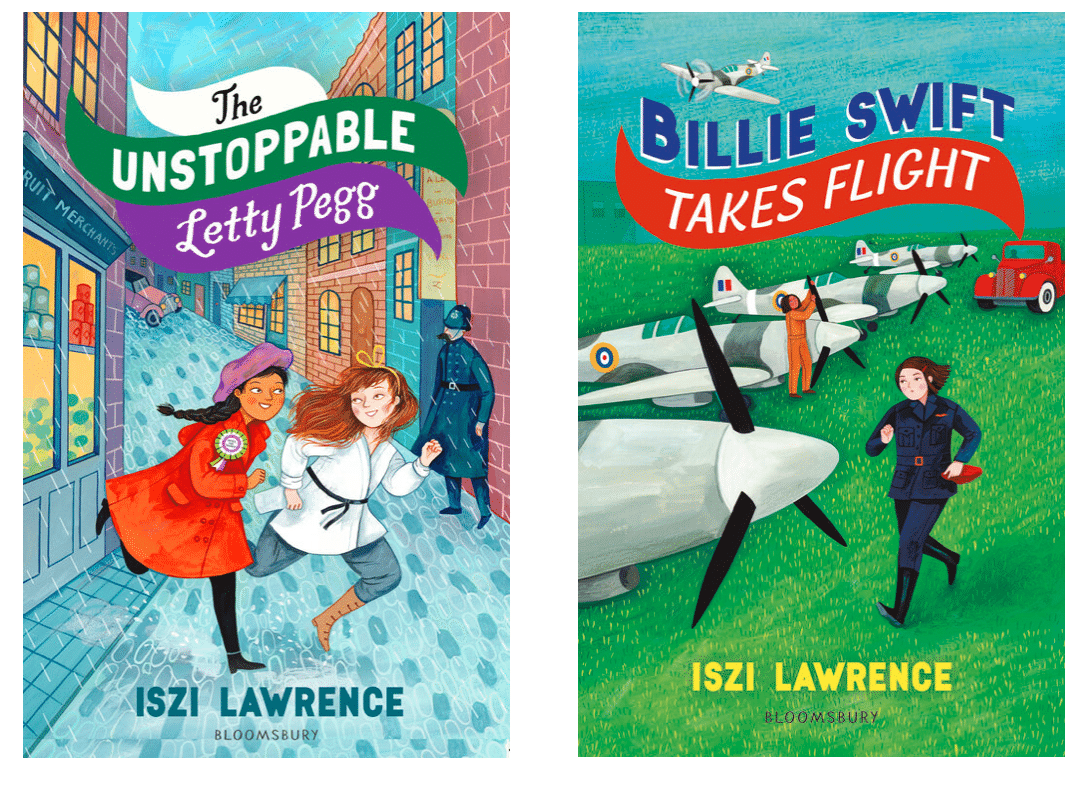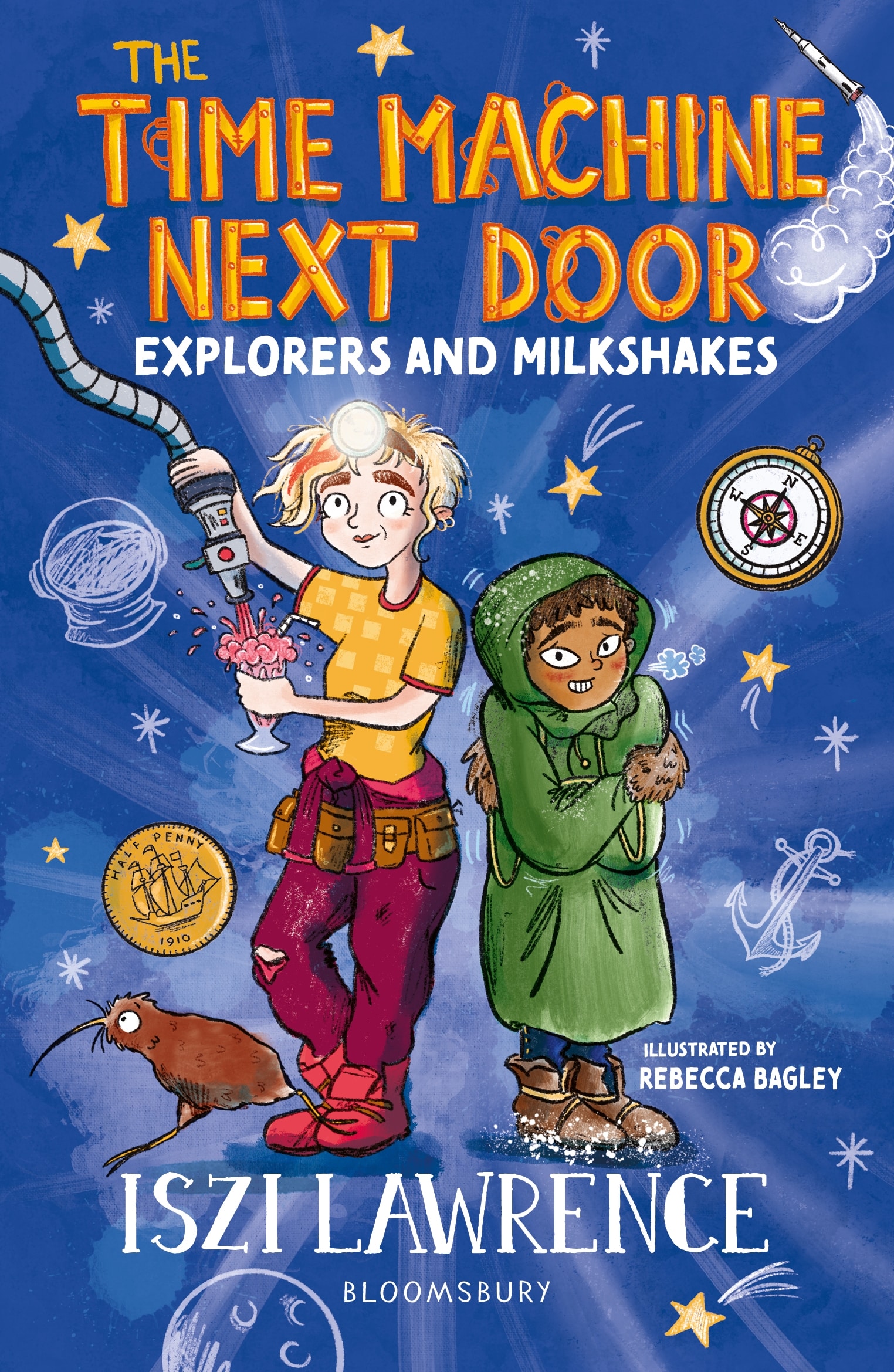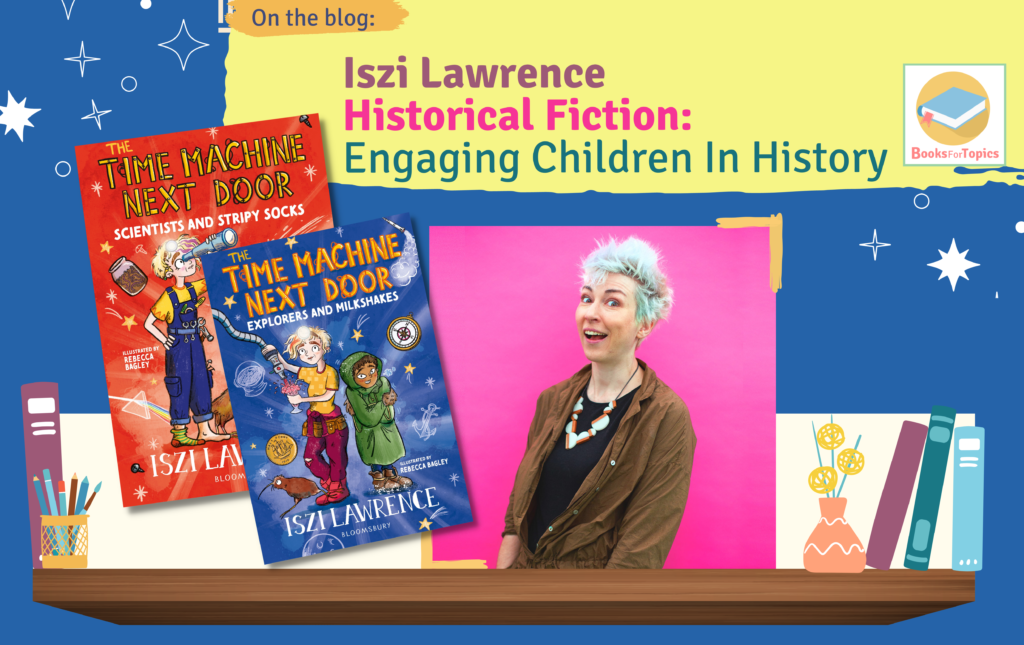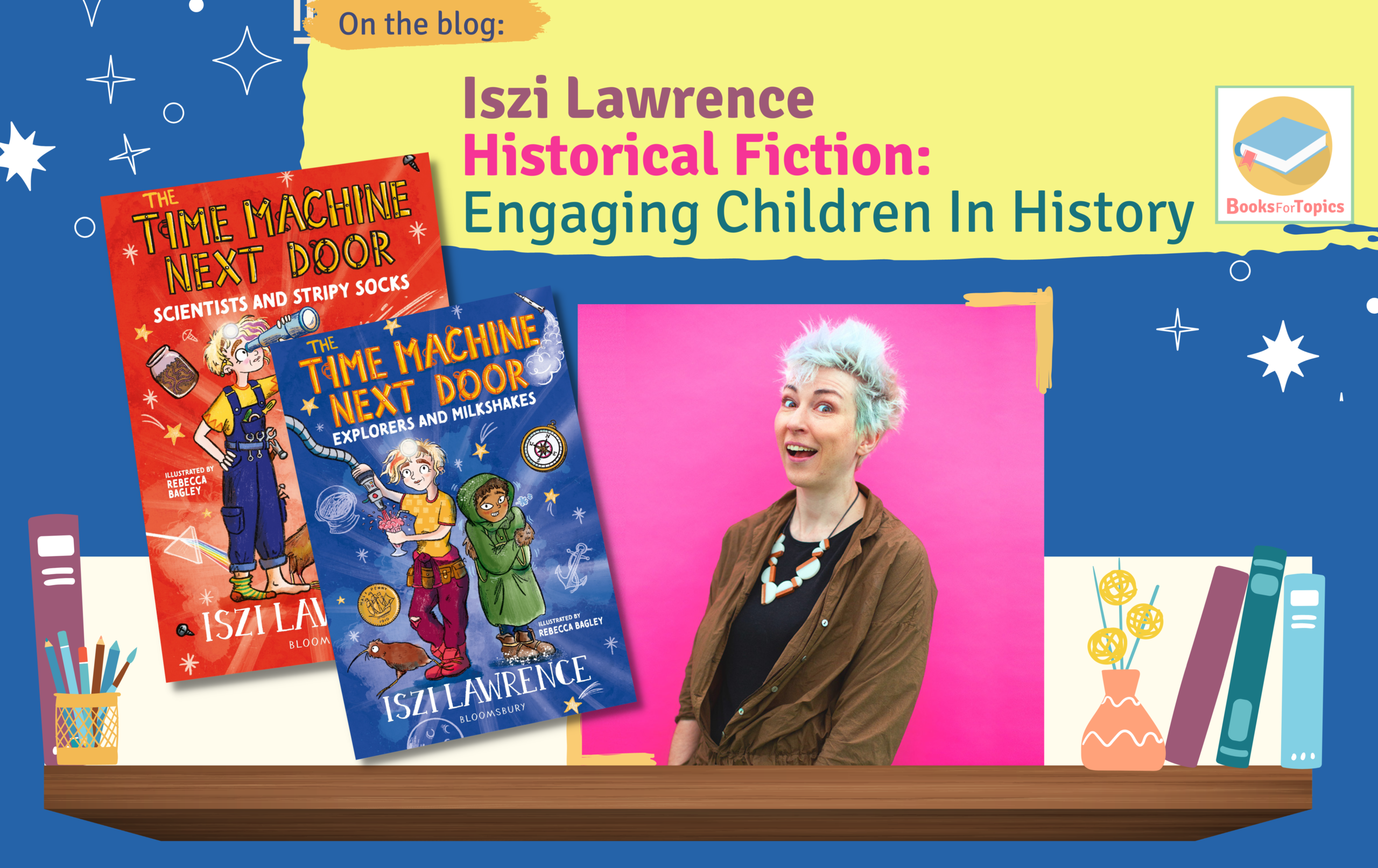Guest Post: Iszi Lawrence
Author of The Time Machine Next Door
 Historical Fiction – Engaging Children With History
Historical Fiction – Engaging Children With History
History can be a tough sell for kids. Let’s face it, reading about battles and wars, politics and revolutions, can be pretty dry. But that’s where historical fiction comes in. By bringing the past to life through vivid characters and compelling stories, historical fiction immerses readers in the time period, making them care about the events and people that shaped our world.
Caring About the Past
As a writer of children’s historical fiction, I know first-hand the challenge of making history interesting and relevant to young readers. When I was a kid, I couldn’t have cared less about the suffragettes. All they did was march around in stuffy clothes, sew banners, and starve themselves. And one got hit by a horse, which just seemed kind of random. But as an adult, I discovered that the suffragettes and the world around them were far more complex and fascinating than I ever realised. For a start, Winston Churchill, our national hero, was the bad guy! As home secretary, he told the police to attack the protesters rather than arrest them. Not to worry, the suffragettes fought back using Jiu-Jitsu, and even landed some officers in the hospital! I knew I had to write about them in a way that would challenge my ten-year-old self. That’s how I came up with the idea for The Unstoppable Letty Pegg, a young girl whose mother is a suffragette and whose father is a police officer tasked with stopping the movement. Suddenly, the emotions and struggles (and Jiu Jitsu) are real.
 Engaging Personally With History
Engaging Personally With History
Historical fiction provides a unique opportunity for children to engage with history on a deeper level. By putting themselves in the shoes of the characters, students are able to consider what they would do in the same situation. Find a turning point in a book, and get the kids to say what they would do, and why. Like when Billie Swift (Billie Swift Takes Flight) decides whether to go and help a pilot who crashed their Spitfire or to run home and stay out of trouble.
Or when Abigail has to decide whether to stay on the Island or run away to sea with her friend Boubacar, who is a slave, after her plantation-owner father is killed by pirates (Blackbeard’s Treasure). There are no wrong answers. Discussing their actions in the same situation makes them think not only about their own morals and empathy, but how the constraints of a different time would change them.
A Gateway to Further Learning
Both reading and writing historical fiction can be a gateway to further learning, inspiring students to research the time period or events in greater detail, leading to a deeper understanding and appreciation of history.
So many learning opportunities are opened up when children are forced to consider questions like:
‘Do they even speak the same language?’
‘How long would it take them to walk that distance?’
‘Where did they go to the bathroom?’
The Time Machine Next Door series offers up plenty of opportunities for creative classrooms. The time machine works by following objects’ timelines through history, so you could all pick the same object and travel to different points in time to see how things have changed. Or you could all choose multiple objects owned by different classes or nationalities of people at the same point in time and look at the differences between them.
The goal of historical fiction is not just to entertain, but to educate. By presenting history through the eyes of engaging characters and compelling stories, historical fiction can spark a lifelong interest in learning about the past. And for librarians and teachers, it’s a valuable tool for bringing history to life and engaging young readers in a way that textbooks and lectures never could.
Iszi’s brand new books The Time Machine Next Door: Explorers and Milkshakes and The Time Machine Next Door: Scientists and Stripy Socks are out now.

The Time Machine Next Door Book 1 and Book 2 are available now.
Read our review panel’s comments on The Time Machine Next Door: Scientists and Stripy Socks.
We also have more children’s books about history on our booklists, for further ideas for historical stories.
Where next?
> Visit our Reading for Pleasure Hub
> Browse our Topic Booklists
> View our printable year group booklists.
> See our Books of the Month.











